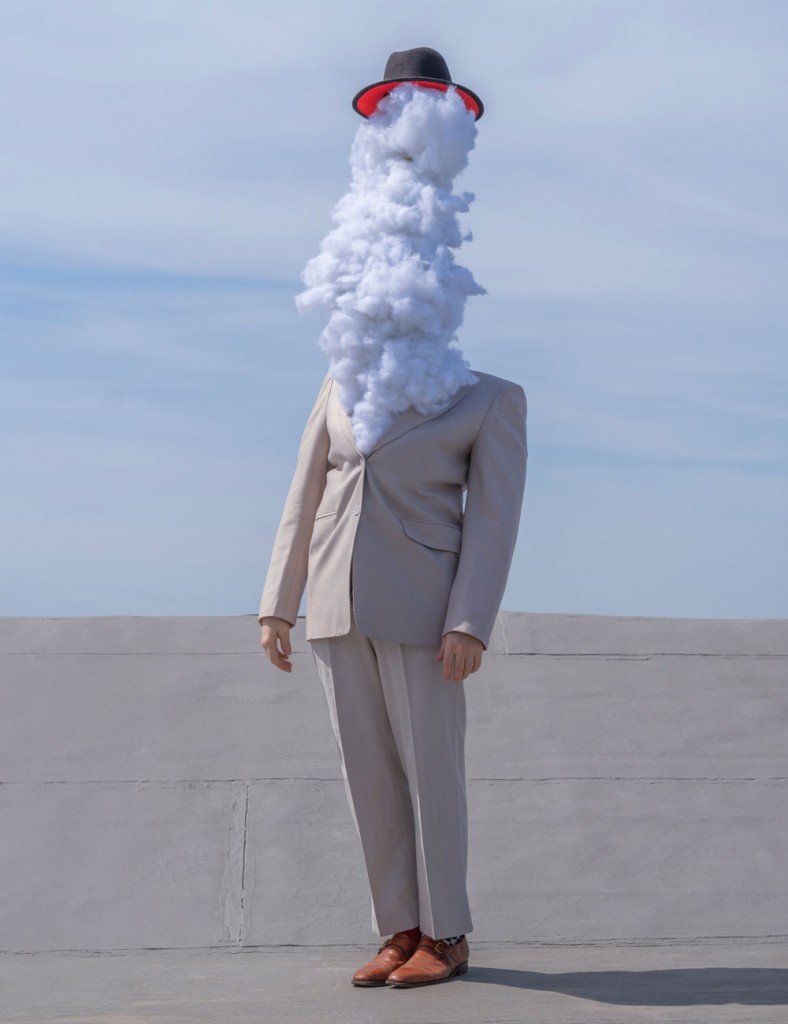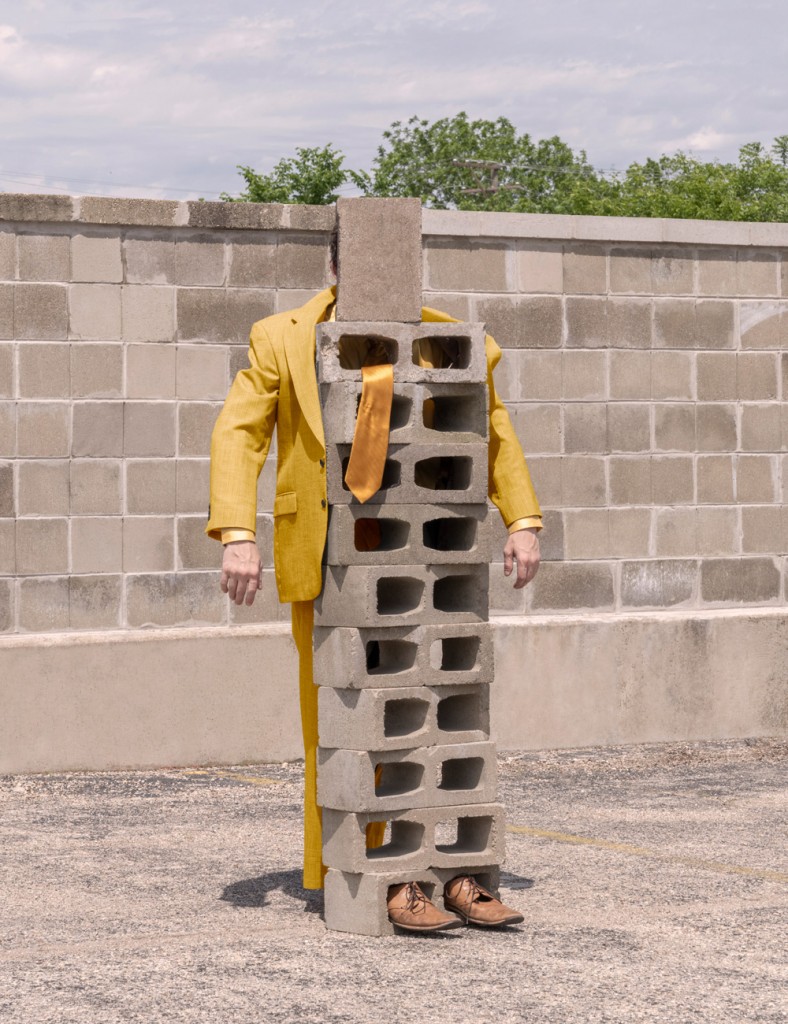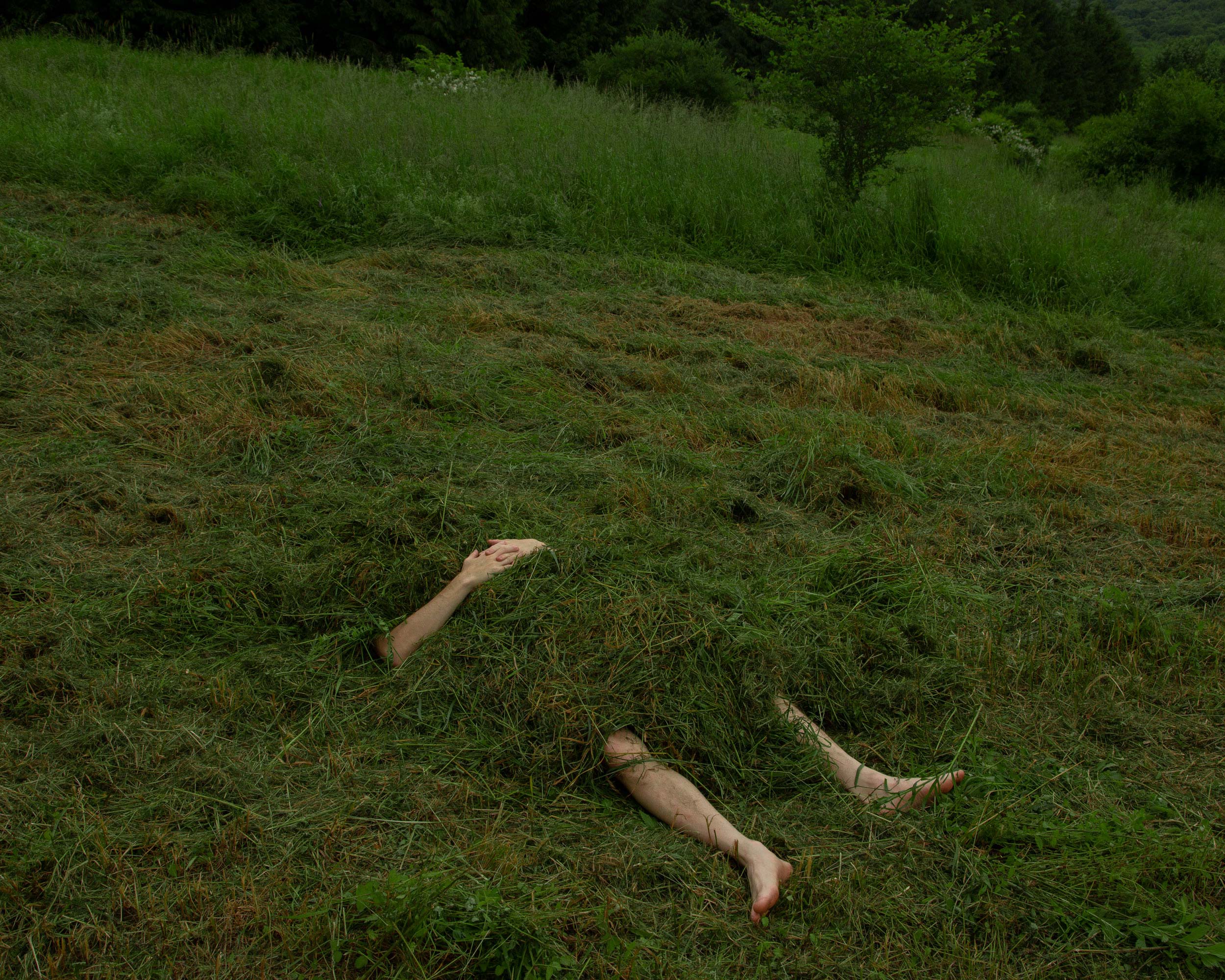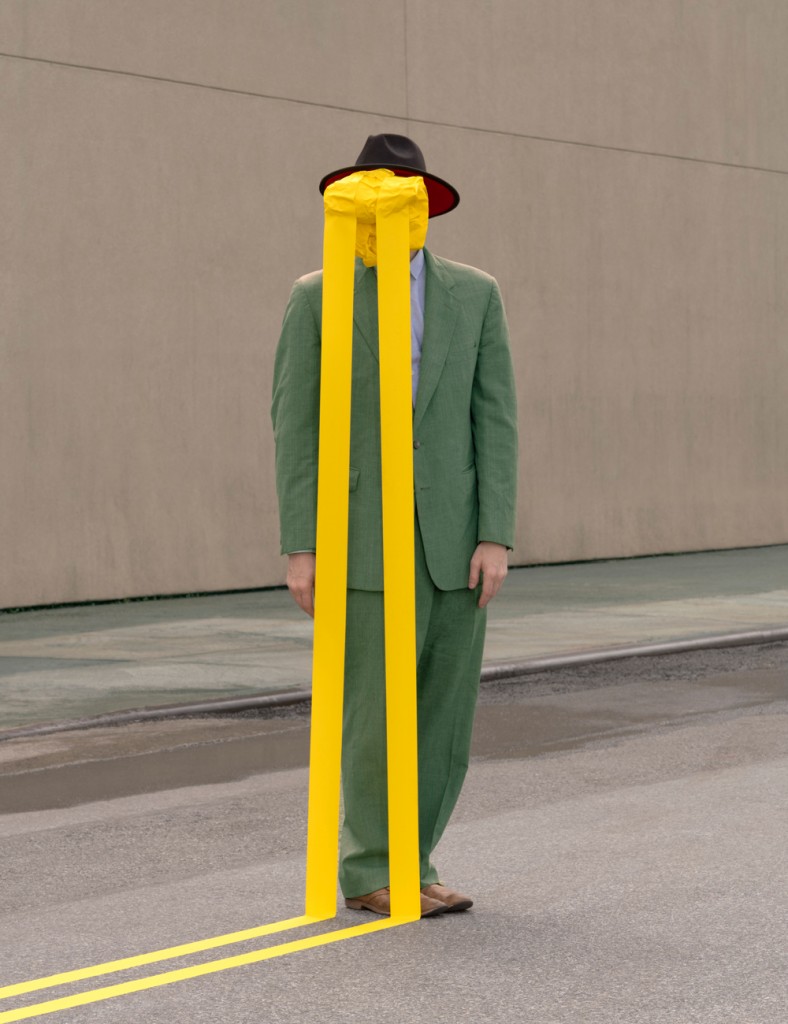Through the lens
Through the Lens of Ben Zank
The New York City–based photographer shares how he brings energy and movement to still photography.
Interview—Mark Mann
Photos—Ben Zank
A strange sort of ambiguity reigns over the photographs of Ben Zank. Each one is a meticulously crafted visual joke, and yet despite the careful staging, they have a spur-of-the-moment quality.
This aspect of cultivated spontaneity drew us to his work for the cover of the latest edition of BESIDE, our Movement issue. We were looking for images that would express multiple dimensions of movement: struggle, flow, and the stillness that lies between. Zank is an expert at revealing the ways that action and surrender can coexist within a single moment.
We caught up with him this spring to learn more about his process.
Mark Mann: Tell me about the photo of the woman on the slide, which we selected for the cover of our latest edition.
Ben Zank: That photo is one of my oldest images that’s still strong after all these years. When I first put it out, I didn’t think it was going to be that well-received. Not only because I made it at a time when I was feeling depressed — I also wasn’t very inspired.
But the stars aligned. A friend had come over and we were making photos all day, mostly headshots. She brought a bag of clothes and was wearing the yellow sweater, and when I saw the slide, I said, “Why don’t you get on it?”
It’s a fun image that really pops. It’s really open for interpretation: which way is she going on the slide? I like to think that she’s going down the slide, not up. I mean, if going down is really, you know, down.
—
What do rock skipping, pigeon racing, and van dwelling have in common?
All are expressions of movement with surprising lessons to teach us. Discover more in the newest edition of BESIDE, our Movement issue.
Order NowMM: I’m interested in the atmosphere you strive to create on a shoot. You’ve said, “I have a very impulsive thought process that usually inhibits me from thinking too much about an image before trying to execute it.” How do you create situations where you can act on your creative impulses?
BZ: I think that sort of behaviour comes, number one, from growing up with ADHD, and that still being part of my life. And growing up in New York City, I like to use the urban environment as my studio, and you don’t have much control over stuff you see in the city. The locations you can use are pretty limited.
So the spontaneity comes from having to adapt to what is in front of me. I’ve done that for so long that I’ve found that when I have a lot of control over an image, it’s not as interesting as shooting on the street. It puts me in a position where I don’t get to flesh out an idea too much. That’s how I can arrive at things that feel unique and fresh, I think. Like throwing dice.


MM: Do you see your spontaneous approach as an adaptive technique for your ADHD?
BZ: Absolutely. I wasn’t trained in photography, I didn’t go to school for it, and I’ve struggled with clamping down and trying to learn specific things about photography. But when it comes to creating, there’s a lot of problem-solving that needs to be done.
You always hit a roadblock, whether it’s the light or the limits of the body or the clothing doesn’t look right. And that’s when you have to hit stop and take a different path.
So instead of trying to push through and achieve that one original idea, I let those roadblocks stay where they are and try to do something different. And I’m okay with that because I’m used to not getting the result that I originally envisioned. I’m just taking whatever I can get and going with that.
MM: Your photos seem to show friction between your human subjects and the natural environments where they find themselves. What are you expressing with that tension?
BZ: Whenever I’m in the city, I wish I was in nature. And whenever I’m in nature, like going upstate for a week, I want to go back to the city. So I’m never fully content, but creatively there is a moment when I do feel content and I want to execute what I’ve been brooding over.
Both sides of those landscapes blend together. So when I’m shooting in nature, I try to make things feel a bit more ordered. I can’t make everything perfect, but I can do little things to complement the human subject and make the image cooler.
When I’m shooting in the city, things feel more ordered, so I actually look for disorder, like a hole in the street or a mountain of discarded items. Whereas in nature, there’s nothing that can be out of place, but when you add a bit of order, that’s the disorder of nature.

MM: The subjects of your photos have this quality of absorption. They are lost to the viewer. Either we don’t see their faces or their eyes are closed. Why is that?
BZ: Once again, that comes from something that I experience in my day-to-day life. I’ve always been quite the people-watcher. Especially in New York, I’m just looking at everybody. And I think that holds true for anyone. When you look at a photograph or a painting and there are faces, people are instantly drawn to the face. They’re going to look at the face first. That becomes the focal point.
When you remove the face, you remove a lot of the prejudice and all of that easy emotion that you can digest. If you’re not trying to tell a specific story about an individual, which I’m not, then removing the face is a way to let you really look at the image as a whole.


MM: One of the things I appreciate about your photos is the implied effort. They’re still, but they’re not restful. There’s a lot of movement in creating the situations. Where do you think the energy comes from in your photos?
BZ: I strive to breathe life into the images in whatever way I can. That just comes from getting bored really easily. I want a viewer to look at the image and immediately be drawn to the subject, but at the same time be confused. I want there to be more than one focal point.
Never Miss Another Issue
Two issues per year
25% OFF previous issues
Free Shipping in Canada

